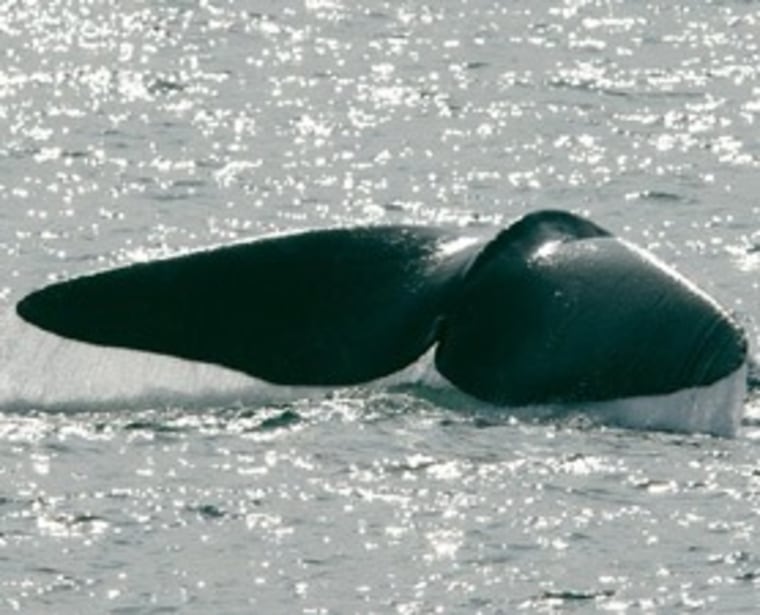Only 30 eastern North Pacific right whales are left on the planet, making it the world’s smallest population of whales, according to a paper published in this week’s Royal Society Biology Letters.
Scientists believe 19th century whaling and recent illegal catches by the USSR led to this whale’s dramatic downfall. Reports from the mid 1800’s suggest that these whales once numbered at least 23,000 from North America to the Okhotsk Sea and Japan.
Surveys now suggest that only around eight female and 20-22 male eastern North Pacific right whales are left.
“With such small numbers, and so few females, we cannot predict whether this population will increase or decrease,” lead author Paul Wade told Discovery News. “It could go either way. Under ideal conditions, a right whale population could increase by at least a few percent per year, but probably not such a small population like this.”
These whales are very large marine mammals, with some growing to 60 feet in length. They mostly feed on small crustaceans known as copepods. Due to the whale’s size and other considerations, humans cannot breed them and other big baleen species.
Wade, a research biologist at the National Marine Mammal Laboratory at the Alaska Fisheries Science Center, and his colleagues used several different methods, including DNA analysis and photo-identification surveys, to count the eastern North Pacific right whales. The estimates all came to very similar conclusions, all pointing to around 30.
The whale’s precarious status today, according to the authors, “is a direct consequence of uncontrolled and illegal whaling, and highlights the past failure of international management to prevent such abuses.”
Wade added that the whales were “pushed to the brink of extinction by illegal Soviet catches in the 1960’s, and that this was a failure of monitoring and enforcement under the IWC (International Whaling Commission).” This year’s IWC annual meeting in Paris has failed to conclude with a new deal that could further protect many species.
Wade and his team believe that “any negotiation needs to include strict monitoring, including independent genetic sampling of markets, to prove the meat being sold comes from legitimate sources.” Ship strikes, disturbance from seismic activities and entanglement in fishing gear further threaten the eastern North Pacific right whales.
Howard Rosenbaum, a researcher for the Wildlife Conservation Society and the American Museum of Natural History, believes the North Pacific right whale is “one of the most endangered of all great whale species.”
Five years ago, Rosenbaum and others conducted DNA studies that proved right whales consist of three genetically distinct populations: North Pacific right whales, for which the eastern group is a subset; North Atlantic right whales; and Southern right whales. Western North Pacific right whales are also at risk of extinction, but there is no reliable estimate of their numbers now.
The second smallest whale population may be the critically endangered western population of grey whales. They are estimated to be at about 100.
Wade and his team think the eastern North Pacific right whales “may be on par with other relict populations decimated by whaling for which there is a similar rarity of sightings, such as bowhead whales near Svalbard, right whales in the eastern North Atlantic or right whales in Chile and Peru.”
One additional problem faced by the eastern North Pacific right whale is lack of public exposure. The few that are still alive live in a remote area, so they are out of human sight, and therefore out of mind in terms of a push to save them.
“So public attention of the plight of this population has not occurred at least partially due to that, which we think is too bad,” Wade said from a ship in the central Aleutian Islands, where he is conducting more whale surveys.
